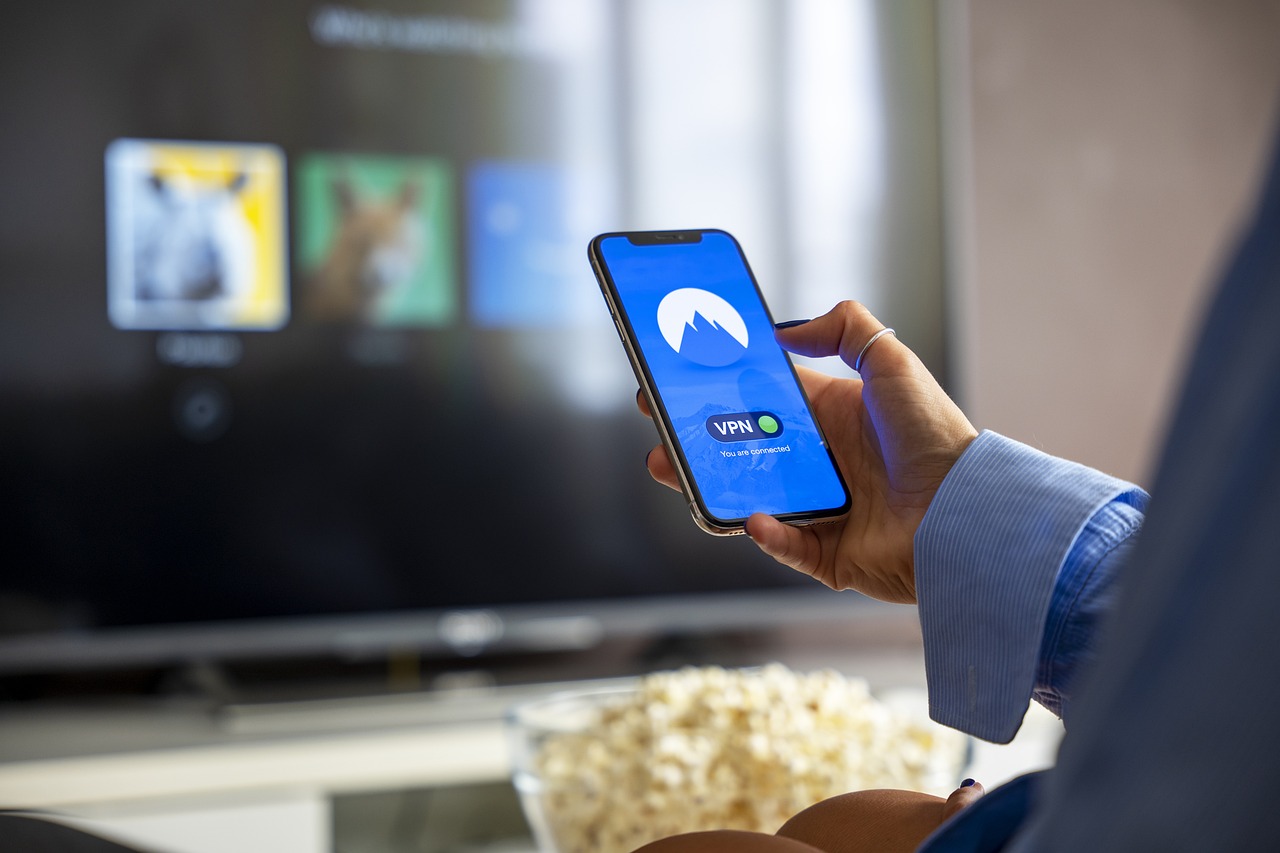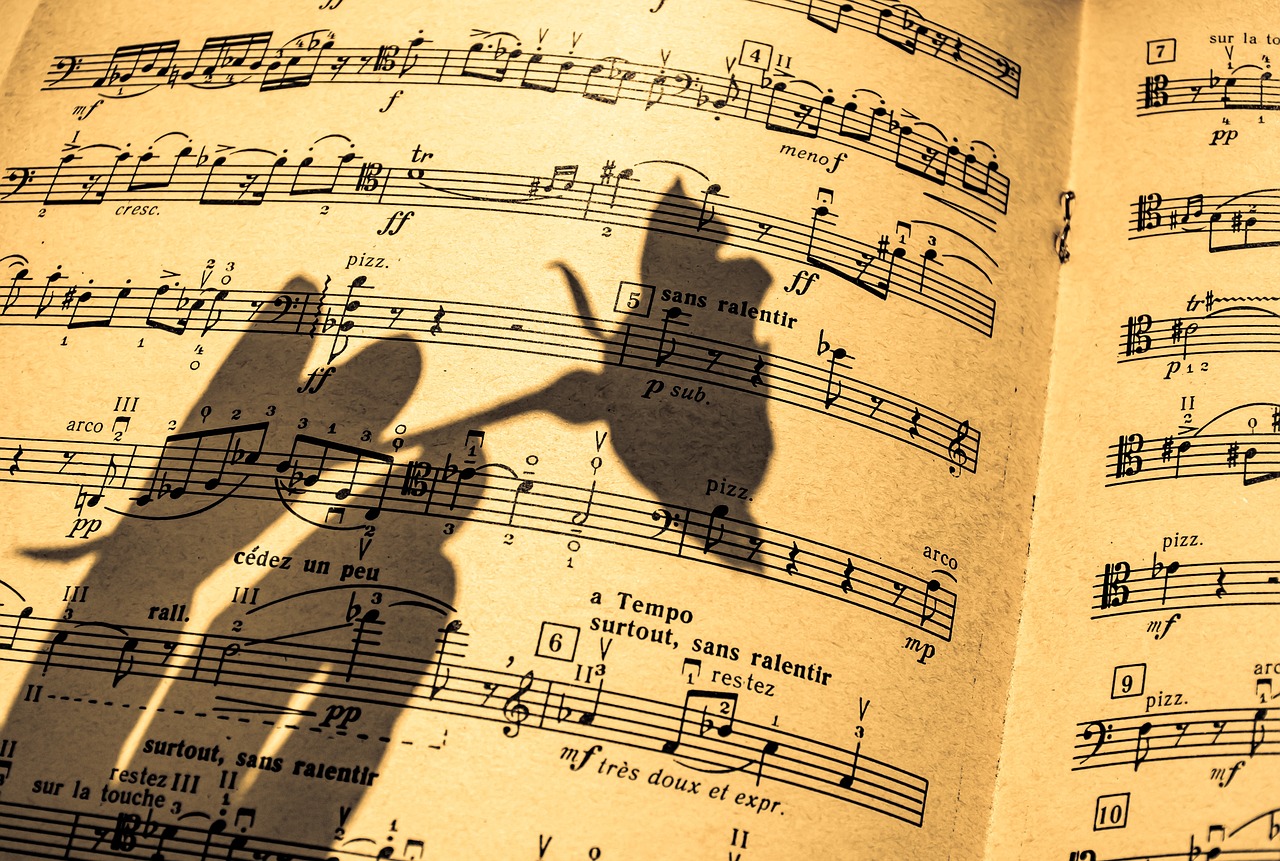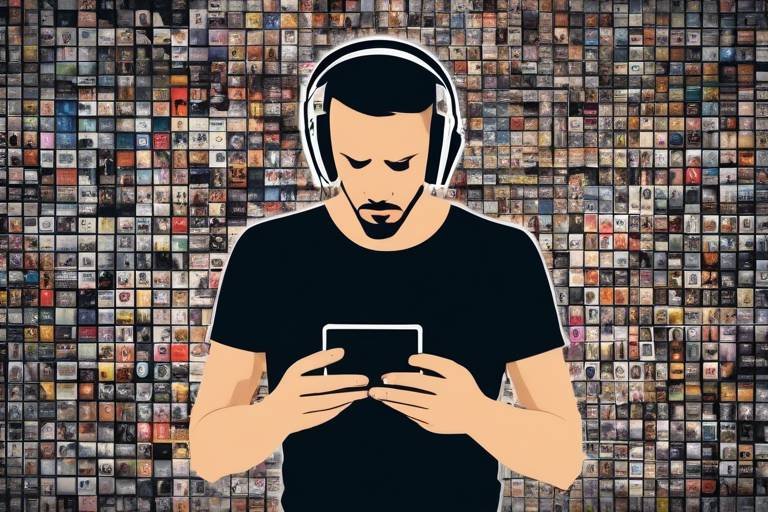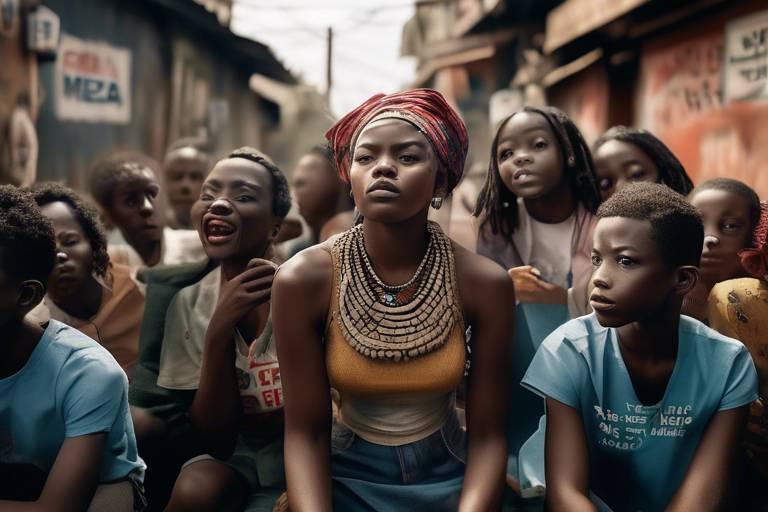The Effects of Online Streaming on Music Consumption
In the last decade, the way we consume music has undergone a seismic shift, largely driven by the advent of online streaming platforms. Gone are the days when we would save up for a new album or flip through vinyl records at a local store. Now, with just a few clicks, we have access to millions of songs, all at our fingertips. This transformation has not only changed how we listen to music but has also reshaped the entire music industry, affecting artists, listeners, and the underlying economics of music consumption.
One of the most significant changes has been the shift in listening habits. People are moving away from the traditional album-oriented approach to a more fragmented, single-track consumption model. This shift reflects a broader trend toward convenience and accessibility. With streaming services like Spotify, Apple Music, and YouTube Music, listeners can create personalized playlists, discover new artists through algorithmic recommendations, and enjoy music on-the-go. The ease of access means that anyone can dive into a vast ocean of genres and styles, leading to a more diverse musical experience.
However, this shift comes with its own set of challenges, particularly for artists. While online streaming platforms provide a gateway to reach wider audiences, they also raise questions about fair compensation. Many artists find themselves navigating a complex landscape where the revenue models of streaming services can significantly impact their earnings. For instance, the difference between subscription-based models and ad-supported platforms can be stark. Subscription services typically provide a more reliable income stream for artists, whereas ad-supported models may offer exposure but lower payouts. Understanding these dynamics is crucial for artists looking to thrive in the digital age.
Moreover, the emergence of direct-to-fan strategies is becoming increasingly popular. Artists are leveraging streaming platforms not just to share their music but to build meaningful relationships with their fans. This can include promoting merchandise, offering exclusive content, or even engaging in live-streamed performances. By fostering these connections, artists can create additional revenue streams beyond just streaming royalties, enhancing their overall financial sustainability.
As we look at the broader picture, it's clear that online streaming has also influenced the popularity of various music genres. Data shows that listener preferences are shifting, with some genres gaining traction while others may fade into the background. This evolution can affect what types of music receive promotion and investment, ultimately shaping the musical landscape.
In addition to changing listening habits and artist dynamics, online streaming has broken down geographical barriers, allowing artists to reach global audiences. This newfound accessibility has not only fostered diverse music consumption but has also paved the way for exciting cross-cultural collaborations. Artists are now able to draw inspiration from a myriad of cultures, leading to the emergence of new genres and fusions that enrich the music landscape.
Furthermore, streaming platforms often curate localized content, promoting regional artists and sounds. This focus on local music helps preserve cultural identities while providing a platform for artists to gain international recognition. As a result, listeners are exposed to a rich tapestry of sounds that they might not have encountered otherwise.
Looking ahead, the future of music consumption is poised for further innovation. As technology continues to evolve, we can expect enhanced user experiences and new monetization strategies for artists. The landscape of online streaming is ever-changing, and staying ahead of the curve will be essential for both listeners and artists alike.
- How has streaming changed music consumption?
Streaming has shifted music consumption from album-focused listening to single-track, on-demand access, allowing for greater variety and personalization. - Are artists fairly compensated through streaming?
Compensation varies widely; subscription models generally provide more predictable income than ad-supported platforms, leading to ongoing debates about fair pay. - What are direct-to-fan strategies?
These strategies involve artists engaging directly with their fans through exclusive content and merchandise, creating additional revenue streams outside of streaming. - How does streaming impact genre popularity?
Streaming influences listener preferences, which can affect which genres receive more promotion and investment in the industry. - What does the future hold for music consumption?
As technology evolves, we can expect new innovations in streaming services, enhancing user experiences and monetization options for artists.

Changing Listening Habits
The rise of online streaming has drastically transformed the way we consume music. Gone are the days when people would eagerly await the release of an entire album, spending hours listening to every track in sequence. Instead, we now live in an era where single-track consumption reigns supreme. This shift in listening habits is largely driven by the convenience and accessibility offered by streaming platforms such as Spotify, Apple Music, and YouTube.
With just a few taps on our smartphones, we can access millions of songs from various genres and artists, creating personalized playlists that cater to our unique tastes. This newfound freedom allows listeners to explore music in a more casual and spontaneous manner. For instance, instead of committing to a full album, a listener can easily sample a track or two, deciding whether to dive deeper into an artist's discography.
Moreover, the ability to discover music through algorithms and curated playlists has changed how we encounter new sounds. Streaming services utilize complex algorithms that analyze our listening habits, suggesting songs and artists we might not have found otherwise. This has led to a more diverse musical landscape, where genres blend and evolve, and listeners are constantly exposed to fresh content. In fact, many users now rely on these platforms to introduce them to new music, rather than traditional radio or music videos.
Interestingly, this shift also reflects broader societal trends towards instant gratification. In a world where everything is available at our fingertips, patience is becoming a rare commodity. Listeners want their music fix quickly, leading to the popularity of shorter songs and catchy hooks that capture attention in mere seconds. This phenomenon is evident in the rise of platforms like TikTok, where snippets of songs go viral, often overshadowing the full tracks.
To further illustrate this point, consider the following table that highlights the differences between traditional album-oriented listening and modern streaming habits:
| Aspect | Traditional Listening | Streaming Listening |
|---|---|---|
| Engagement | Album-focused, deep listening | Single tracks, casual exploration |
| Discovery | Radio, music videos | Algorithms, curated playlists |
| Attention Span | Longer tracks, full albums | Shorter songs, quick consumption |
| Accessibility | Physical media (CDs, vinyl) | Digital access (streaming apps) |
As we navigate this rapidly evolving musical landscape, it’s crucial to recognize the impact these changing listening habits have on both artists and the industry. The shift from albums to singles not only affects how music is produced but also how it is marketed and monetized. In essence, we are witnessing a revolution in music consumption that reflects our changing relationship with technology and entertainment.
So, what does this mean for the future? As we continue to embrace streaming as our primary mode of music consumption, we must consider how this will shape the artists we love and the music we cherish. Will the album ever make a comeback, or are we destined to live in a world of playlists and singles? Only time will tell, but one thing is for sure: the way we listen to music will keep evolving, and we’ll be right here to experience it all.

Impact on Artists
The advent of online streaming has dramatically reshaped the music landscape, presenting both opportunities and challenges for artists. With platforms like Spotify, Apple Music, and YouTube, musicians can now reach a global audience at the click of a button. This unprecedented access allows artists to showcase their work to listeners who may never have discovered them otherwise. However, the flip side of this digital revolution is a complex web of revenue models that often leaves artists questioning their financial sustainability.
One of the most significant impacts of streaming on artists is the shift in how they are compensated. Traditionally, musicians relied on album sales and live performances for income, but the streaming model has disrupted this norm. Instead of purchasing entire albums, listeners now tend to consume music in a more fragmented way—favoring singles over full-length projects. This change not only affects how artists create music but also how they strategize their releases. For many, the focus has shifted to producing catchy singles that can go viral, rather than crafting cohesive albums that tell a story.
To navigate this new landscape, artists must understand the various revenue models employed by streaming services. Below is a table summarizing the key revenue models:
| Revenue Model | Description | Impact on Artists |
|---|---|---|
| Subscription | Users pay a monthly fee for ad-free listening and access to a vast library of music. | Artists generally earn more per stream compared to ad-supported models. |
| Ad-Supported | Free access to music with advertisements played between tracks. | Lower payouts per stream; however, it can increase exposure. |
| Direct-to-Fan | Artists sell music and merchandise directly to fans through streaming platforms. | Creates a more sustainable income stream beyond streaming royalties. |
Understanding these models is crucial for artists looking to optimize their earnings. For instance, subscription-based services tend to provide a more predictable revenue stream, allowing artists to plan their finances more effectively. In contrast, ad-supported models may offer broader exposure but often yield lower payouts, which can be a double-edged sword. This means that while artists can gain a larger audience, the financial return may not be as substantial.
Moreover, some artists are embracing direct-to-fan strategies to enhance their engagement with listeners. By using streaming platforms as a springboard, they can promote not only their music but also merchandise and exclusive content. This approach can create additional revenue streams and foster a deeper connection with fans. Imagine being able to buy a limited edition t-shirt or access a behind-the-scenes video just because you streamed your favorite artist's latest hit! It’s a win-win situation for both artists and fans.
Another noteworthy trend is the shift in genre popularity driven by streaming data. Artists can now analyze listener preferences and tailor their music accordingly, leading to a dynamic evolution of genres. This adaptability is vital in a world where musical tastes can change overnight. For instance, genres like K-pop and Latin music have seen a meteoric rise in popularity, largely thanks to the global reach of streaming services. This shift not only influences what music gets promoted but also what types of investments are made in the industry.
As artists navigate this complex landscape, they must remain agile and informed about the changing dynamics of music consumption. By leveraging the opportunities presented by online streaming while addressing the inherent challenges, artists can carve out a sustainable and rewarding career in the ever-evolving music industry.
- How do streaming services pay artists? Streaming services typically pay artists based on the number of streams their music receives, with payouts varying between subscription and ad-supported models.
- Can artists make a living from streaming? While some artists can earn a substantial income from streaming, many supplement their earnings through live performances, merchandise sales, and other revenue streams.
- What should artists consider when choosing a streaming platform? Artists should evaluate factors such as payout rates, audience demographics, and promotional opportunities when selecting a streaming platform.

Revenue Models
The landscape of music consumption has drastically changed with the advent of online streaming, and one of the most significant aspects of this transformation is the employed by various streaming platforms. Understanding these models is crucial for artists navigating this digital terrain, as they directly impact how musicians earn their living. Traditionally, artists relied heavily on album sales and live performances for income. However, streaming has introduced a different set of dynamics that can either empower or undermine their financial stability.
At the core of streaming revenue models are two primary types: subscription-based and ad-supported services. Subscription-based platforms, such as Spotify Premium and Apple Music, allow users to pay a monthly fee for an ad-free experience and access to a vast library of music. For artists, this model often provides a more predictable revenue stream, as they receive a portion of the subscription fees based on the number of streams their music garners. This arrangement can lead to a more stable income, especially for those who cultivate a loyal fan base that consistently streams their tracks.
On the other hand, ad-supported models, like the free tier of Spotify, offer users access to music without a subscription fee but with interruptions from advertisements. While this model can increase exposure for artists and attract a broader audience, the payouts per stream tend to be significantly lower. This disparity raises critical questions about sustainability in the music industry. Artists may find themselves in a position where they need to balance the benefits of widespread exposure against the financial realities of lower earnings.
To illustrate the differences in potential earnings between these two models, consider the following table:
| Revenue Model | Average Payout per Stream | Potential Earnings for 1 Million Streams |
|---|---|---|
| Subscription-Based | $0.003 - $0.005 | $3,000 - $5,000 |
| Ad-Supported | $0.0005 - $0.0015 | $500 - $1,500 |
These figures highlight a crucial reality for artists: while streaming can provide a larger audience, the financial compensation may not always align with the effort and creativity put into their music. This is where direct-to-fan strategies come into play. Some artists are now leveraging streaming platforms to forge closer relationships with their listeners. By promoting merchandise, exclusive content, or even special live events, they can create additional revenue streams that go beyond traditional streaming payouts.
In conclusion, the revenue models of online streaming platforms present both opportunities and challenges for artists. While subscription services can offer a more stable income, ad-supported models can increase exposure but often at the cost of lower payouts. As artists navigate this complex landscape, understanding these revenue models becomes essential for optimizing their earnings and ensuring sustainability in their careers.

Subscription vs. Ad-Supported Models
The landscape of music streaming is largely defined by two primary revenue models: subscription-based and ad-supported services. Each model offers distinct advantages and challenges for both artists and listeners, shaping how music is consumed and monetized in today’s digital age. Let's dive into the intricacies of these models to understand their implications better.
Subscription services, like Spotify Premium and Apple Music, provide users with an ad-free listening experience, allowing them to enjoy their favorite tracks without interruptions. For artists, this model generally translates into a more stable and predictable revenue stream. When a listener pays a monthly fee, a portion of that fee is allocated to the artists based on the number of streams they generate. This system can potentially lead to higher payouts for artists compared to ad-supported models, where revenue is derived from advertisers rather than direct listener payments.
On the flip side, ad-supported models, such as the free tiers offered by platforms like YouTube and Spotify Free, allow users to access music without a subscription, but with the trade-off of hearing advertisements. While this model opens up music access to a broader audience, the payouts to artists can be significantly lower. For instance, artists may earn a fraction of a cent per stream from ad-supported plays, leading to discussions about the sustainability of this model for musicians trying to make a living from their craft.
To illustrate the differences in revenue potential, consider the following table:
| Model | Revenue Source | Payout to Artists | User Experience |
|---|---|---|---|
| Subscription | Monthly fees from users | Higher, more predictable | Ad-free, offline listening available |
| Ad-Supported | Advertising revenue | Lower, variable | Ads interrupt listening |
While subscription services may seem more favorable for artists, they also require a dedicated fanbase willing to pay for the content. This is where direct-to-fan strategies come into play. Many artists are now utilizing their presence on these platforms to foster connections with fans, offering exclusive content, merchandise, and concert tickets directly through their profiles. This not only enhances fan engagement but also creates additional revenue streams that can complement earnings from streaming.
In conclusion, the choice between subscription and ad-supported models can significantly affect how artists earn money and how listeners experience music. As these models continue to evolve, artists must adapt their strategies to maximize their reach and revenue in an ever-changing digital landscape.
- What are the main differences between subscription and ad-supported streaming models?
Subscription models provide ad-free experiences and generally higher payouts for artists, while ad-supported models allow free access but result in lower earnings per stream. - Can artists make a living from streaming?
It can be challenging, as the revenue from streaming is often lower than traditional music sales. Many artists are exploring additional revenue streams, such as merchandise and live performances. - Which streaming model is better for listeners?
It depends on personal preference. Subscription models offer a seamless experience without ads, while ad-supported models allow free access at the cost of interruptions.

Direct-to-Fan Strategies
This article explores how online streaming has transformed music consumption patterns, impacting artists, listeners, and the industry as a whole. We will delve into various facets of this phenomenon.
The rise of online streaming has altered how people engage with music, shifting from album-oriented listening to single-track consumption. This change reflects broader trends in accessibility and convenience for listeners.
Online streaming platforms have created new opportunities and challenges for artists. While they can reach wider audiences, the revenue models often lead to debates about fair compensation and sustainability in the music industry.
Different streaming services employ varied revenue models, affecting how artists earn money. Understanding these models is crucial for artists navigating the digital landscape and optimizing their earnings.
Subscription-based services offer artists a more predictable revenue stream, while ad-supported models can provide exposure but often yield lower payouts. Exploring these differences is essential for artists' financial strategies.
In today's digital age, artists are increasingly embracing to cultivate deeper connections with their audiences. This approach allows musicians to bypass traditional industry gatekeepers, fostering a more personal relationship with their fans. For instance, artists can use social media platforms to share exclusive content, behind-the-scenes footage, and personal stories that resonate with their audience.
Moreover, many musicians are leveraging streaming platforms to promote their merchandise and exclusive content. By integrating their music with personalized offers, such as limited-edition vinyl or concert tickets, artists can enhance fan engagement and create additional revenue streams. This not only boosts their earnings but also strengthens their fan base. Consider the following tactics:
- Exclusive Content: Offering fans exclusive tracks, videos, or live streams can create a sense of belonging and loyalty.
- Merchandise Promotion: Artists can use their platforms to promote unique merchandise, fostering a stronger community around their brand.
- Fan Clubs: Establishing fan clubs with special perks can enhance engagement and provide a steady income source.
These strategies not only enhance the artist's visibility but also empower fans to feel like they are part of the journey. By nurturing these direct relationships, artists can cultivate a loyal following that supports them through thick and thin. In a world where music consumption is often fleeting, these connections can lead to lasting success.
Streaming has influenced the popularity of various music genres, with data showing trends in listener preferences. This shift can impact what types of music receive promotion and investment.
Online streaming has enabled artists to reach global audiences, breaking down geographical barriers. This accessibility fosters diverse music consumption and allows for cross-cultural collaborations.
The global reach of streaming has led to the emergence of new genres and fusions, as artists draw inspiration from various cultures. This evolution enriches the music landscape and broadens listener experiences.
Streaming platforms often curate localized playlists, promoting regional artists and sounds. This focus on local music helps preserve cultural identities while allowing artists to gain international recognition.
As technology continues to evolve, the future of music consumption will likely see further innovations in streaming services, including enhanced user experiences and new monetization strategies for artists.
Q: How can artists effectively use direct-to-fan strategies?
A: Artists can use social media to engage with fans, offer exclusive content, and promote merchandise directly through their profiles, creating a more personal connection.
Q: What are the benefits of building a direct relationship with fans?
A: Direct relationships lead to increased loyalty, higher engagement, and additional revenue streams through merchandise and exclusive offers.
Q: Are there risks associated with direct-to-fan strategies?
A: While there are risks, such as overexposure or mismanagement of fan expectations, the potential for deeper connections often outweighs these concerns.

Shifts in Genre Popularity
The rise of online streaming has dramatically reshaped the musical landscape, leading to significant . Gone are the days when listeners were confined to the radio playlists of their local stations or the CD collections of their friends. Now, with just a few taps on a smartphone, music aficionados can access a vast library of songs spanning countless genres from every corner of the globe. This unprecedented access has not only diversified the listening experience but has also influenced which genres rise and fall in popularity.
One of the most notable changes is the growing dominance of genres like hip-hop and EDM (Electronic Dance Music), which have surged in popularity over the past decade. Data from streaming platforms indicates that these genres are often at the top of the charts, with streaming numbers skyrocketing. This shift can be attributed to a younger demographic that prefers high-energy, beat-driven music, which is perfect for social media sharing and viral trends.
Moreover, the algorithmic nature of streaming services plays a crucial role in determining what music gets promoted. For example, playlists curated by algorithms often favor songs that fit specific moods or activities, which can lead to the rapid rise of particular genres. If a certain style of music becomes associated with a trending challenge on social media, it can experience an explosive increase in streams and downloads. This phenomenon has been particularly evident with genres like lo-fi hip-hop, which has gained traction as a go-to soundtrack for studying and relaxation.
Interestingly, streaming has also paved the way for the resurgence of nostalgic genres. As younger listeners discover older music through playlists that blend new hits with classic tracks, genres like 80s synth-pop and 90s grunge are experiencing a revival. The ability to easily explore music from different eras has created a unique blend of old and new, allowing listeners to appreciate the roots of contemporary sounds.
In addition to popular trends, the emergence of localized genres has been another significant shift. As streaming platforms curate playlists that highlight regional music styles, artists from various cultures have gained international recognition. For instance, genres like Afrobeats and K-Pop have exploded in popularity, not just in their home countries but worldwide, thanks to the accessibility provided by streaming services. This global reach fosters a rich tapestry of musical influences, encouraging collaborations that might never have happened in the past.
To illustrate the shifts in genre popularity further, consider the following table that highlights some of the most streamed genres over the last few years:
| Year | Top Genres | Notable Artists |
|---|---|---|
| 2020 | Hip-Hop, Pop | Drake, Dua Lipa |
| 2021 | EDM, Latin | Calvin Harris, Bad Bunny |
| 2022 | K-Pop, Indie | BTS, Tame Impala |
| 2023 | Lo-fi, Afrobeats | Chillhop Music, Burna Boy |
In conclusion, the shifts in genre popularity driven by online streaming are reshaping the music industry in exciting ways. As artists adapt to these changes, they have the opportunity to explore new sounds and connect with diverse audiences, ultimately enriching the global music scene.
- How has streaming changed music consumption? Streaming has made music more accessible, allowing listeners to explore a wider variety of genres and artists than ever before.
- What genres are currently trending? Genres like hip-hop, EDM, K-Pop, and Afrobeats are currently seeing significant popularity on streaming platforms.
- How do streaming algorithms affect genre popularity? Algorithms curate playlists based on listener habits, often promoting certain genres that align with trending activities or moods.
- Can older genres make a comeback? Yes, streaming has allowed for the resurgence of nostalgic genres as younger audiences discover and share music from past decades.

Global Reach of Music
This article explores how online streaming has transformed music consumption patterns, impacting artists, listeners, and the industry as a whole. We will delve into various facets of this phenomenon.
The rise of online streaming has altered how people engage with music, shifting from album-oriented listening to single-track consumption. This change reflects broader trends in accessibility and convenience for listeners.
Online streaming platforms have created new opportunities and challenges for artists. While they can reach wider audiences, the revenue models often lead to debates about fair compensation and sustainability in the music industry.
Different streaming services employ varied revenue models, affecting how artists earn money. Understanding these models is crucial for artists navigating the digital landscape and optimizing their earnings.
Subscription-based services offer artists a more predictable revenue stream, while ad-supported models can provide exposure but often yield lower payouts. Exploring these differences is essential for artists' financial strategies.
Some artists are leveraging streaming platforms to build direct relationships with fans, promoting merchandise and exclusive content. This approach can enhance engagement and create additional revenue streams beyond streaming.
Streaming has influenced the popularity of various music genres, with data showing trends in listener preferences. This shift can impact what types of music receive promotion and investment.
Online streaming has revolutionized the way music is consumed across the globe, effectively dismantling geographical barriers that once limited artists' reach. Today, a musician in a small town can share their work with audiences on the other side of the world with just a few clicks. This global accessibility fosters a rich tapestry of musical exchange, allowing listeners to explore diverse sounds and styles that they might never have encountered otherwise.
The impact of this global reach is profound. Artists from different cultures can now collaborate more easily than ever, creating unique fusions of genres that reflect a blend of influences. For instance, the rise of genres like Afrobeats and Latin trap showcases how artists from various backgrounds are pushing the envelope, resulting in a more vibrant and eclectic music landscape. This phenomenon not only enriches the listening experience but also allows for a deeper appreciation of cultural diversity.
Moreover, streaming platforms often curate localized playlists that spotlight regional artists and sounds. Such playlists serve a dual purpose: they promote local talent while also preserving cultural identities. For example, platforms may feature traditional folk music from a specific region alongside contemporary hits, helping to keep those sounds alive in the digital age. This emphasis on local content can lead to international recognition for artists who might have otherwise remained under the radar.
To illustrate the global reach of music, consider the following table that highlights some of the most popular streaming platforms and their unique contributions to the global music scene:
| Platform | Unique Feature | Global Influence |
|---|---|---|
| Spotify | Localized playlists | Promotes regional artists worldwide |
| Apple Music | Exclusive artist content | Supports global collaborations |
| YouTube Music | User-generated content | Showcases diverse genres and cultures |
| Deezer | Flow feature for personalized listening | Encourages discovery of international music |
As we look to the future, it’s clear that the global reach of music will continue to expand, with technology playing a pivotal role in shaping how artists connect with fans. The ability to share and discover music from all corners of the globe will only enhance the richness of our musical experiences.
- How has streaming changed music consumption? Streaming has shifted the focus from albums to individual tracks, allowing listeners to curate their experiences more freely.
- Are artists benefiting from streaming services? While artists have greater exposure, the revenue models can be challenging, often leading to discussions about fair compensation.
- What is the future of music consumption? As technology evolves, we can expect further innovations in streaming services that enhance user experience and create new monetization strategies for artists.

Emergence of New Genres
In the vibrant world of music, the is a thrilling phenomenon that has been significantly influenced by online streaming. This digital revolution has not only changed how we listen to music but has also paved the way for innovative sounds that blend various cultural influences. As artists gain access to global audiences, they are inspired to experiment with different styles, leading to the birth of genres that may have never existed otherwise. For instance, genres like reggaeton, which combines Latin rhythms with hip-hop elements, have exploded in popularity, showcasing how cultural fusion can create something entirely fresh and exciting.
Moreover, streaming platforms enable artists to share their music with listeners from diverse backgrounds, allowing them to draw inspiration from a wide array of musical traditions. This cross-pollination of sounds is akin to a musical melting pot, where artists can mix and match elements from various genres, resulting in unique fusions. For example, the rise of k-pop has not only brought Korean pop music to the forefront but has also influenced Western artists to incorporate catchy hooks and choreographed performances into their work. This blending of genres creates a rich tapestry of sound that keeps listeners engaged and eager for more.
Additionally, streaming algorithms play a crucial role in promoting these new genres. By analyzing listener preferences, platforms can recommend emerging artists and tracks that might not have received attention through traditional media. This democratization of music discovery allows niche genres to find their audience, fostering a vibrant ecosystem where creativity thrives. As a result, we see the rise of genres like lo-fi hip-hop, which has gained immense popularity for its chill vibes and study-friendly beats, capturing the essence of a generation that values both relaxation and productivity.
To illustrate the impact of streaming on genre emergence, consider the following table that highlights some of the most popular new genres and their defining characteristics:
| Genre | Characteristics | Notable Artists |
|---|---|---|
| Reggaeton | Latin rhythms, hip-hop beats, catchy hooks | Bad Bunny, J Balvin |
| K-Pop | High-energy performances, visual aesthetics, diverse musical styles | BTS, BLACKPINK |
| Lo-fi Hip-Hop | Chill beats, jazzy samples, relaxing ambiance | Nujabes, Chillhop Music |
As we delve deeper into the future of music consumption, the possibilities for new genres are virtually limitless. With advancements in technology and the ongoing evolution of cultural exchanges, we can expect to see even more innovative sounds emerging from the depths of the digital landscape. In this way, online streaming not only transforms how we consume music but also shapes the very essence of what music can be. So, the next time you hit play on your favorite streaming service, remember that you’re not just listening to a song; you’re participating in a dynamic and ever-evolving musical journey.
- What role do streaming platforms play in the emergence of new music genres?
Streaming platforms provide artists with global exposure, allowing them to blend different cultural influences and experiment with new sounds, leading to the creation of innovative genres. - Can streaming help niche genres gain popularity?
Yes, streaming algorithms recommend emerging genres to listeners, which can help niche genres find their audience and thrive in a competitive music landscape. - What are some examples of new genres that have emerged?
Examples include reggaeton, K-pop, and lo-fi hip-hop, each characterized by unique elements that reflect cultural fusions and innovative approaches to music.

Localized Content
The rise of online streaming has significantly transformed how music is consumed, particularly through the concept of . Streaming platforms have recognized the importance of catering to regional tastes and preferences, which has led to the creation of curated playlists that highlight local artists and genres. This not only provides listeners with a sense of connection to their cultural roots but also promotes the rich diversity of music that exists around the world.
By focusing on localized content, streaming services help to preserve cultural identities while simultaneously allowing artists to gain international recognition. For instance, platforms like Spotify and Apple Music regularly feature playlists that showcase regional hits, emerging talents, and traditional sounds. This approach not only enriches the listening experience for users but also creates opportunities for artists to break into new markets. Imagine a listener in the United States discovering a vibrant Afrobeat track from Nigeria or a traditional folk song from the Andes—this cross-pollination of music genres is a direct result of localized content strategies.
Moreover, localized content can lead to significant economic benefits for artists and the music industry as a whole. By promoting regional music, streaming platforms can help local artists build a fanbase, which can translate into increased ticket sales for concerts, merchandise, and even collaborations with more established artists. In fact, some platforms have reported that playlists featuring local music can drive up streams and engagement significantly.
To illustrate the impact of localized content, consider the following table that highlights the top streaming platforms and their approach to local music promotion:
| Streaming Platform | Localized Content Strategy | Examples of Localized Playlists |
|---|---|---|
| Spotify | Curated playlists based on regional trends | ¡Viva Latino!, RapCaviar |
| Apple Music | Highlighting emerging local artists | Local Hits, Country Roads |
| YouTube Music | User-generated playlists and local recommendations | Top 100 in [Country] |
In conclusion, localized content is not just a trend; it is a vital aspect of the modern music landscape that fosters cultural appreciation and promotes artists on a global scale. As streaming continues to evolve, we can expect even more innovative approaches to how local music is showcased, ensuring that diverse sounds and voices are heard far and wide.
- What is localized content in music streaming?
Localized content refers to music that is curated and promoted based on regional preferences, showcasing local artists and genres to cater to specific audiences. - How does localized content benefit artists?
By promoting local music, artists can gain exposure to new audiences, build a fanbase, and potentially increase revenue through concert sales and merchandise. - Which streaming platforms focus on localized content?
Platforms like Spotify, Apple Music, and YouTube Music have dedicated strategies for promoting localized content through curated playlists and regional recommendations. - Can localized content help preserve cultural identities?
Yes, by featuring local music and artists, streaming platforms help maintain cultural heritage and promote the diversity of sounds from different regions.

Future of Music Consumption
This article explores how online streaming has transformed music consumption patterns, impacting artists, listeners, and the industry as a whole. We will delve into various facets of this phenomenon.
The rise of online streaming has altered how people engage with music, shifting from album-oriented listening to single-track consumption. This change reflects broader trends in accessibility and convenience for listeners.
Online streaming platforms have created new opportunities and challenges for artists. While they can reach wider audiences, the revenue models often lead to debates about fair compensation and sustainability in the music industry.
Different streaming services employ varied revenue models, affecting how artists earn money. Understanding these models is crucial for artists navigating the digital landscape and optimizing their earnings.
Subscription-based services offer artists a more predictable revenue stream, while ad-supported models can provide exposure but often yield lower payouts. Exploring these differences is essential for artists' financial strategies.
Some artists are leveraging streaming platforms to build direct relationships with fans, promoting merchandise and exclusive content. This approach can enhance engagement and create additional revenue streams beyond streaming.
Streaming has influenced the popularity of various music genres, with data showing trends in listener preferences. This shift can impact what types of music receive promotion and investment.
Online streaming has enabled artists to reach global audiences, breaking down geographical barriers. This accessibility fosters diverse music consumption and allows for cross-cultural collaborations.
The global reach of streaming has led to the emergence of new genres and fusions, as artists draw inspiration from various cultures. This evolution enriches the music landscape and broadens listener experiences.
Streaming platforms often curate localized playlists, promoting regional artists and sounds. This focus on local music helps preserve cultural identities while allowing artists to gain international recognition.
As technology continues to evolve, the future of music consumption will likely see further innovations in streaming services, including enhanced user experiences and new monetization strategies for artists. Imagine a world where algorithms not only recommend songs based on your listening habits but also predict what you'll want to hear next, almost like a musical mind reader. These advancements could lead to a more personalized listening experience, where playlists are tailored to your mood, time of day, or even the weather!
Moreover, we might witness the rise of immersive technologies like virtual reality (VR) and augmented reality (AR) in music consumption. Picture attending a live concert from the comfort of your home, where you can interact with other fans in a virtual space while enjoying the performance. This could redefine how we experience music, making it more engaging and accessible than ever before.
Furthermore, as artists continue to adapt to these changes, we may see a shift towards more direct-to-fan models. Artists could leverage platforms to sell exclusive content, such as behind-the-scenes footage, personalized messages, or even virtual meet-and-greets. This not only enhances fan engagement but also creates additional revenue streams that are less reliant on traditional streaming payouts.
In summary, the future of music consumption is poised to be dynamic and exciting, with technology playing a pivotal role in shaping how we discover, enjoy, and interact with music. The possibilities are endless, and as we move forward, both artists and listeners will need to stay adaptable to thrive in this evolving landscape.
- What are the main benefits of online streaming for listeners?
Online streaming offers unparalleled access to a vast library of music, allowing listeners to discover new artists and genres easily. It also provides convenience, as users can listen to music anytime and anywhere. - How do streaming platforms affect artist revenue?
While streaming platforms allow artists to reach larger audiences, the revenue models often lead to lower payouts per stream compared to traditional album sales, prompting discussions about fair compensation. - Will streaming replace traditional music formats?
While streaming is becoming the dominant form of music consumption, traditional formats like vinyl and CDs still hold value for collectors and audiophiles, suggesting that both can coexist. - How can artists maximize their earnings on streaming platforms?
Artists can optimize their presence on streaming platforms by engaging with fans through social media, promoting merchandise, and utilizing direct-to-fan strategies to create additional revenue streams.
Frequently Asked Questions
- How has online streaming changed music consumption?
Online streaming has shifted music consumption from album-oriented listening to a focus on single tracks. This change reflects a desire for accessibility and convenience, allowing listeners to curate their own playlists and discover new music effortlessly.
- What impact does streaming have on artists?
Streaming platforms have opened up new avenues for artists to reach larger audiences, but they also present challenges regarding fair compensation. Many artists find it difficult to earn a sustainable income due to the revenue models employed by these platforms.
- What are the different revenue models in streaming?
Streaming services typically operate on subscription-based or ad-supported models. Subscription services provide a more stable revenue stream for artists, while ad-supported platforms can offer exposure but often result in lower payouts.
- Can artists build direct relationships with fans through streaming?
Absolutely! Many artists use streaming platforms to engage directly with fans by promoting merchandise and exclusive content. This strategy not only enhances fan loyalty but also creates additional revenue opportunities beyond just streaming.
- How has streaming influenced genre popularity?
The rise of streaming has significantly impacted which genres gain popularity. Data from streaming platforms shows shifts in listener preferences, which can influence what music gets promoted and invested in by the industry.
- What is the global reach of music due to streaming?
Streaming has dismantled geographical barriers, allowing artists to reach global audiences. This has led to a more diverse music consumption experience and has facilitated cross-cultural collaborations that enrich the music landscape.
- Are new music genres emerging because of streaming?
Yes! The global reach of streaming has spurred the emergence of new genres and fusions, as artists blend influences from various cultures. This evolution not only diversifies the music available but also broadens the listener's experience.
- How do localized playlists affect regional artists?
Streaming platforms often curate localized playlists that spotlight regional artists and sounds. This focus helps preserve cultural identities and provides local musicians with opportunities for international recognition.
- What does the future hold for music consumption?
As technology continues to advance, the future of music consumption is likely to see innovations in streaming services, including enhanced user experiences and new monetization strategies for artists, making it an exciting time for both listeners and creators.



















